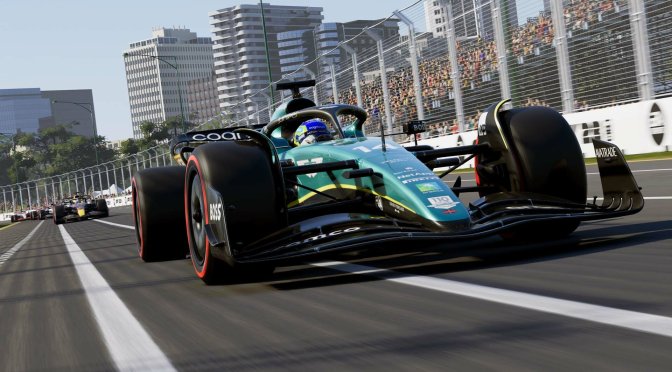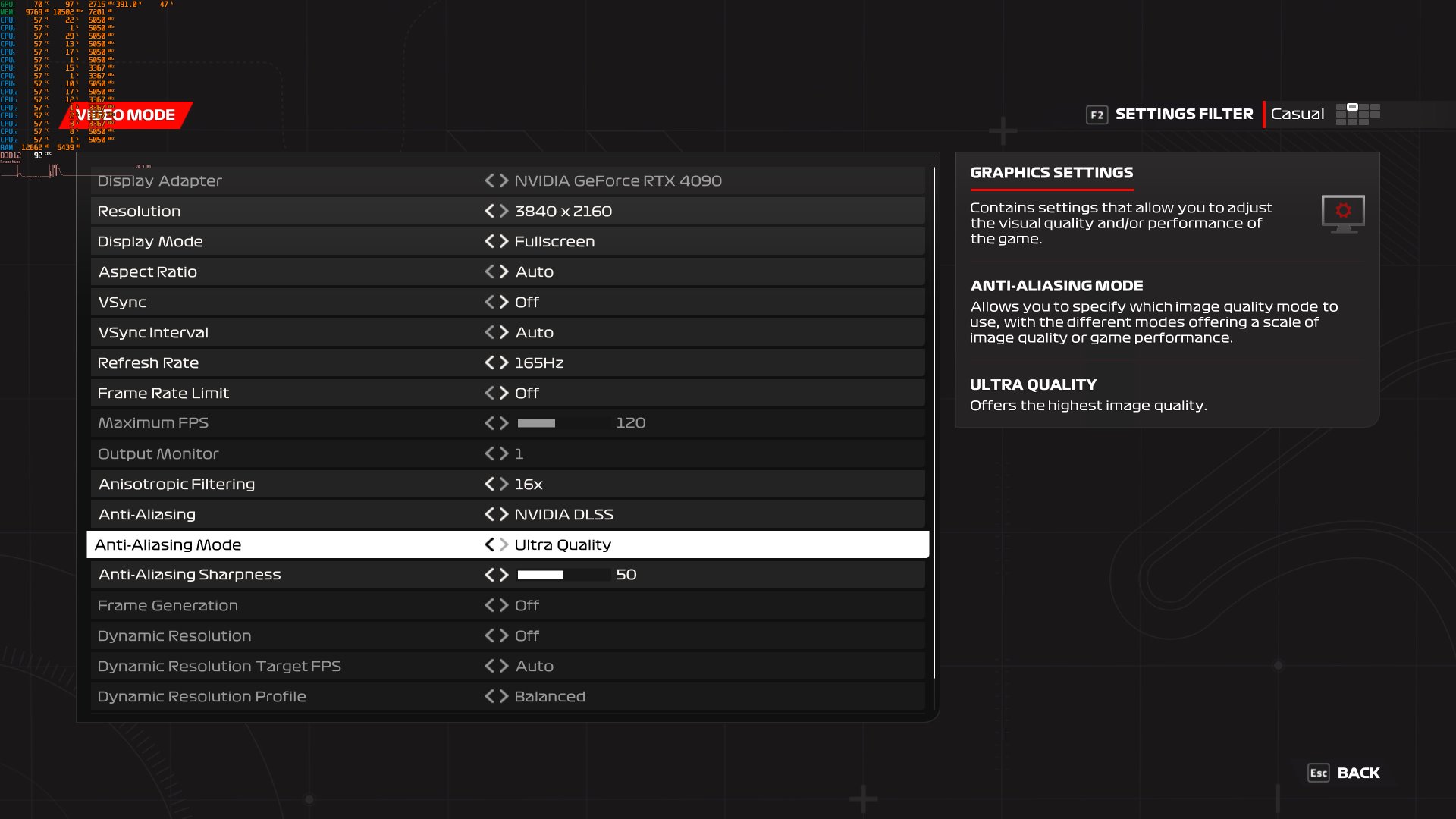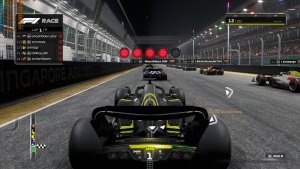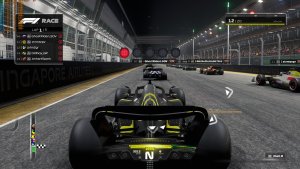F1 23 came out last month and from the looks of it, it’s the first game using NVIDIA DLSS 2 Ultra Quality Mode. Or at least that’s what its in-game settings suggest.
As you can see below, DLSS 2 Ultra Quality Mode is the DLSS 2 mode that offers the highest image quality. Thus, we’ve decided to benchmark it at 4K and compare it with Native 4K + TAA.
Performance-wise, this Ultra Quality Mode performs identically to the native 4K. This makes me believe that this “Ultra Quality” Mode is basically DLAA and not a brand new DLSS preset. Because, if the game was running at a lower internal resolution, performance would be definitely better.
I’ve also captured a comparison between “Native 4K + TAA” (left) and DLSS 2 Ultra Quality (right). Now, I’ll be honest here. At first glance, these two screenshots look similar. However, when using ICAT and zooming in at 400%, I was able to spot some differences. The right image appears to have less aliasing and its distant objects are less blurry.
We got in touch with NVIDIA in order to find out what this Ultra Quality Mode actually is. My guess is that Codemasters used this DLSS Ultra Quality Mode to describe DLAA. I don’t know why the Codies did this, but the performance figures speak for themselves.
I’ll be sure to update this story as soon as we hear back from NVIDIA!
UPDATE:
NVIDIA got back to us and confirmed what we initially assumed. This is indeed DLAA and not a new DLSS preset.
As NVIDIA told us.
“This was an error in naming, this is DLAA and will be updated in a future patch.”

John is the founder and Editor in Chief at DSOGaming. He is a PC gaming fan and highly supports the modding and indie communities. Before creating DSOGaming, John worked on numerous gaming websites. While he is a die-hard PC gamer, his gaming roots can be found on consoles. John loved – and still does – the 16-bit consoles, and considers SNES to be one of the best consoles. Still, the PC platform won him over consoles. That was mainly due to 3DFX and its iconic dedicated 3D accelerator graphics card, Voodoo 2. John has also written a higher degree thesis on the “The Evolution of PC graphics cards.”
Contact: Email





